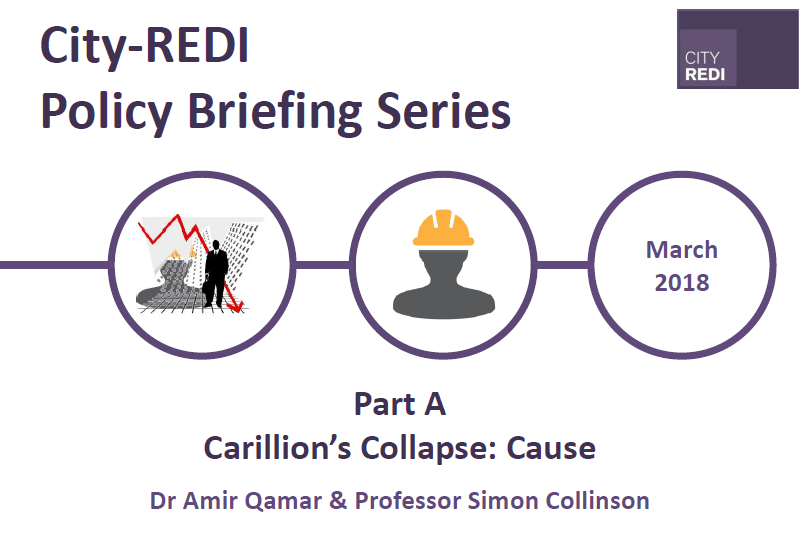 Racing to secure bids over rival construction companies, Carillion, the second-largest construction firm in the UK, hit a financial tipping point, lost the backing of the banks and collapsed. Its aggressive growth strategy and the diversification of its business portfolio increased the complexity of its internal structure. Coupled with poor oversight of its day-to-day operations, over-runs on flagship projects and an unclear corporate governance structure, the firm acquired debts of £1.5bn. One may argue that the demise of the construction giant was an inevitable outcome. The aim of this policy brief is to provide insights into the cause of Carillion’s financial meltdown and outline lessons for managers, shareholders, stakeholders and government from the closure of this construction giant.
Racing to secure bids over rival construction companies, Carillion, the second-largest construction firm in the UK, hit a financial tipping point, lost the backing of the banks and collapsed. Its aggressive growth strategy and the diversification of its business portfolio increased the complexity of its internal structure. Coupled with poor oversight of its day-to-day operations, over-runs on flagship projects and an unclear corporate governance structure, the firm acquired debts of £1.5bn. One may argue that the demise of the construction giant was an inevitable outcome. The aim of this policy brief is to provide insights into the cause of Carillion’s financial meltdown and outline lessons for managers, shareholders, stakeholders and government from the closure of this construction giant.
To download Part A of this policy briefing, please click here.
To read Part B of this policy briefing, please click here.
This policy briefing was written by Dr Amir Qamar, Research Associate, City-REDI and Professor Simon Collinson, Director, City-REDI, University of Birmingham.
Disclaimer:
The views expressed in this analysis post are those of the authors and not necessarily those of City-REDI or the University of Birmingham
To sign up for our blog mailing list, please click here.
